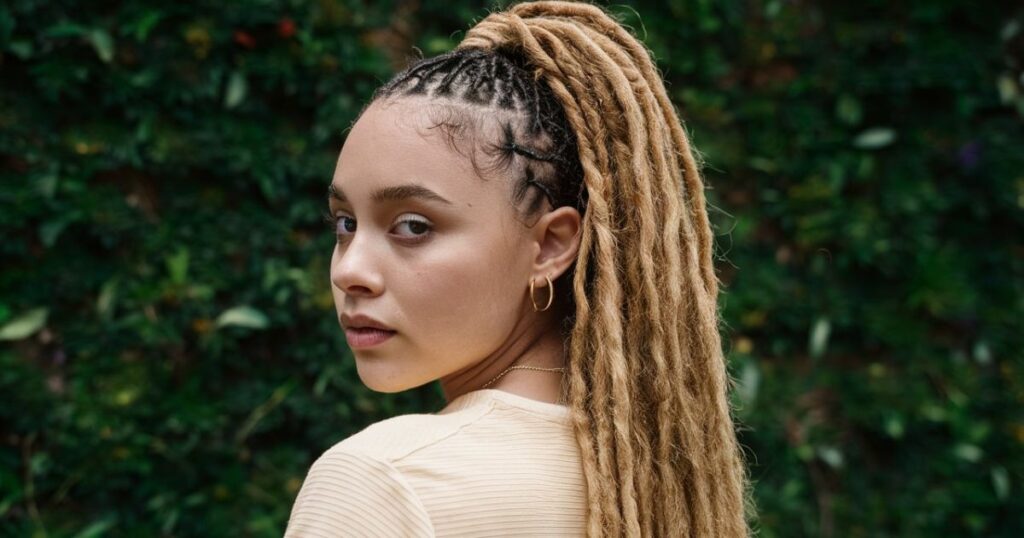Dreads vs Braids In the world of hairstyling, few debates spark as much passion as the dreads vs braids showdown. These two iconic looks have captivated hair enthusiasts for generations, each boasting a rich history and unique appeal. Whether you’re drawn to the rugged charm of dreadlocks or the intricate allure of braids, this comprehensive guide will help you navigate the tangled world of these beloved hairstyles.
Dreads vs Braids – What Sets Them Apart

Before we dive into the nitty-gritty, let’s take a quick look at how dreads and braids stack up against each other:
| Feature | Dreads | Braids |
| Formation | Natural matting or intentional locking | Weaving three or more strands |
| Permanence | Semi-permanent to permanent | Temporary |
| Maintenance | Less frequent, more intensive | More frequent, less intensive |
| Versatility | Limited styling options | Highly versatile |
| Cultural significance | Rastafarian, Hindu ascetics, various cultures | African heritage, widespread global adoption |
Dreadlocks
Dreadlocks, often called “locs” or “dreads,” are rope-like strands of hair formed by matting or braiding. These tresses create a striking, natural look that’s both bold and beautiful. Dreads can form naturally or with a little help, allowing your hair to embrace its wild side.
Braids
Braids, on the other hand, are created by intertwining three or more strands of hair. This versatile technique results in a wide array of styles, from simple three-strand plaits to intricate cornrows and box braids. The sky’s the limit when it comes to braided creativity!
Historical Significance
Both dreads and braids boast rich cultural roots that span centuries and continents.
Dreadlocks
- Ancient Egyptian pharaohs
- Hindu holy men
- Rastafarians in Jamaica
- Maasai warriors in East Africa
These locks have symbolized everything from spiritual devotion to rebellion against societal norms. In the U.S., dreadlocks gained popularity in the 1970s, influenced by the rise of reggae music and Rastafarian culture.
Appearance
The visual impact of dreads and braids couldn’t be more different, yet both styles turn heads wherever they go.
Dreadlocks
Thin, precise locs to thick, freeform ropes. Neat, uniformly sized strands to wildly varied patterns. Short, spiky styles to long, flowing locks.
Sleek and professional (think cornrows or French braids). Bohemian and relaxed (like loose, beachy plaits). Elaborate and eye-catching (such as Ghana braids or fishtail designs).
Formation
The journey from loose hair to dreads or braids is where these styles truly diverge.
- Detangling and sectioning hair
- Gathering three or more strands
- Crossing strands over each other in a pattern
- Securing the ends with bands or heat
Styling Diversity
When it comes to versatility, braids and dreads each have their own strengths.
- Let your hair do its thing naturally
- Regular grooming for a neater appearance
- Dye your locs for added flair
- Cut and style for different silhouettes
Braid Styles
- Box braids
- Cornrows
- French braids
- Dutch braids
- Fishtail braids
- Waterfall braids
- Ghana braids
- And countless more!
Each style can be customized with different sizes, patterns, and added hair for truly unique looks.
Hair Length Requirements

Before you commit to either style, make sure your hair is up to the task.
At least 6 inches of hair for most textures. Longer hair for straighter textures (up to 8-10 inches). Patience as your hair grows and locs mature
- As little as 2 inches
- 5-6 inches minimum
- Can use extensions for added length
Maintenance
Keeping your style looking fresh is crucial, whether you choose dreads or braids.
- Monthly palm rolling and separating
- Occasional professional tightening
- Protecting locs while sleeping with a silk cap
- Edge control and moisturizing
- Redoing braids every 4-8 weeks
- Giving your hair breaks between styles
Cleansing Dreadlocks
- Use residue-free shampoo
- Focus on the scalp and roots
- Gently squeeze locs to remove dirt
- Rinse thoroughly to prevent mildew
Caution
Dilute shampoo and apply it with an applicator bottle. Gently massage the scalp. Rinse carefully to avoid frizz. Use a leave-in conditioner for moisture
Drying
Proper drying is crucial to prevent mold and maintain the integrity of your style.
Drying Dreadlocks
Squeeze out excess water. Use a microfiber towel to absorb moisture. Air dry or use a hooded dryer on low heat. Ensure locs are 100% dry to prevent mildew
Pat gently with a soft towel.Use a hooded dryer on low heat or air dry. Avoid rubbing to prevent frizz. Apply a light oil once dry to seal in moisture. Both styles benefit from sleeping on a silk pillowcase to reduce friction and moisture loss.
Time Required
Time is money, and both these styles are investments.
Dreadlock Time Commitment
- Initial installation 3-5 hours
- Maintenance sessions 1-2 hours monthly
- Full maturation 12-24 months
Braid Time Investment
- Simple braids 30 minutes to 2 hours
- Complex styles (e.g., box braids) 4-8 hours
- Touch-ups 30 minutes to 1 hour weekly
Longevity
How long will your new style last? Let’s break it down.
Dreadlock Lifespan
- Semi-permanent to permanent
- Can last for years with proper maintenance
- May require “comb out” to remove completely
Braid Duration
- Typically last 2-8 weeks
- Protective styles like box braids: up to 2 months
- Easy to change or remove for a new look
Your hair type, care routine, and lifestyle will all impact how long your style lasts.
Frequently Asked Questions
What is the Difference Between Dreads and Locs?
Dreads or dreadlocks are also known as locks or locs.
What is the Difference Between Dreads and Cornrows?
Cornrows are a temporary braided hairstyle, just like braids, and you can undo them. In contrast, dreads or dreadlocks are permanent.
Will my Braids Turn into Dreads?
your braids can turn into dreads only if you want them to. Braided patterns can form, but it may take several months to disappear and turn into locks.

